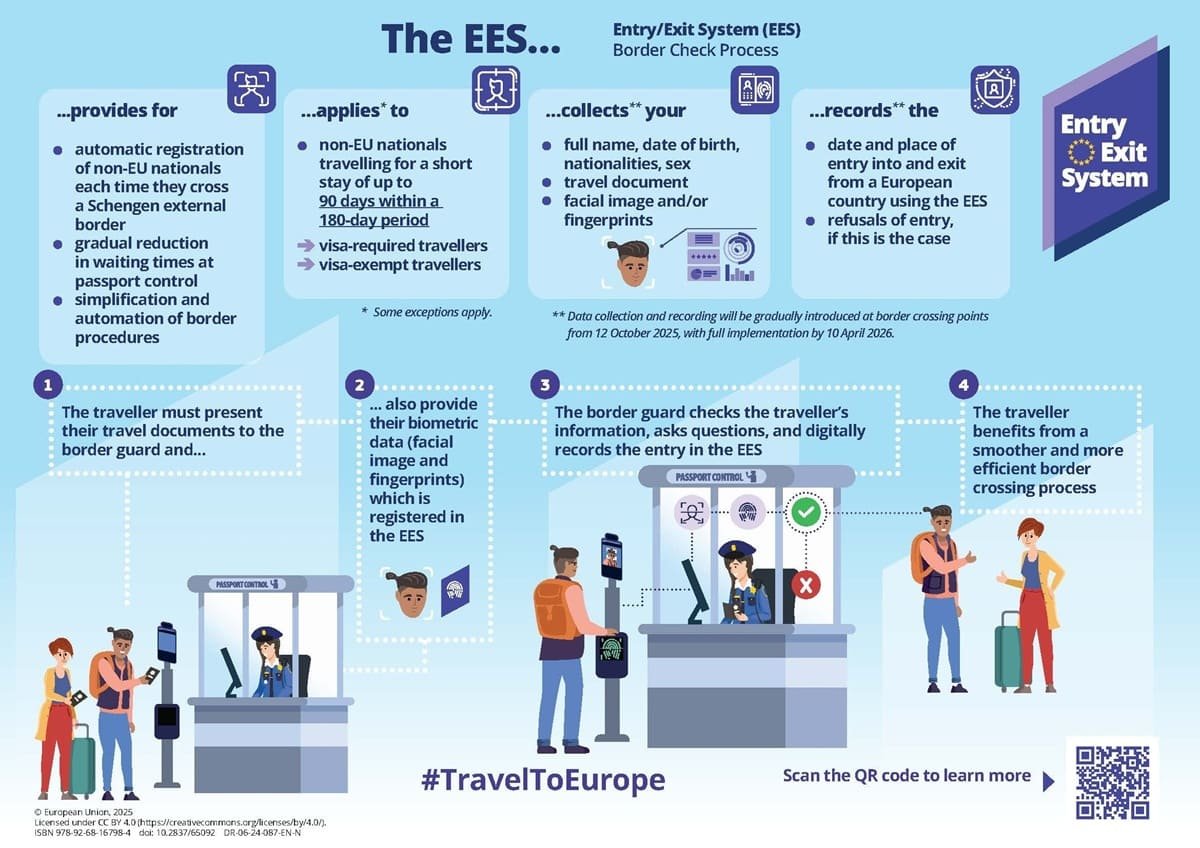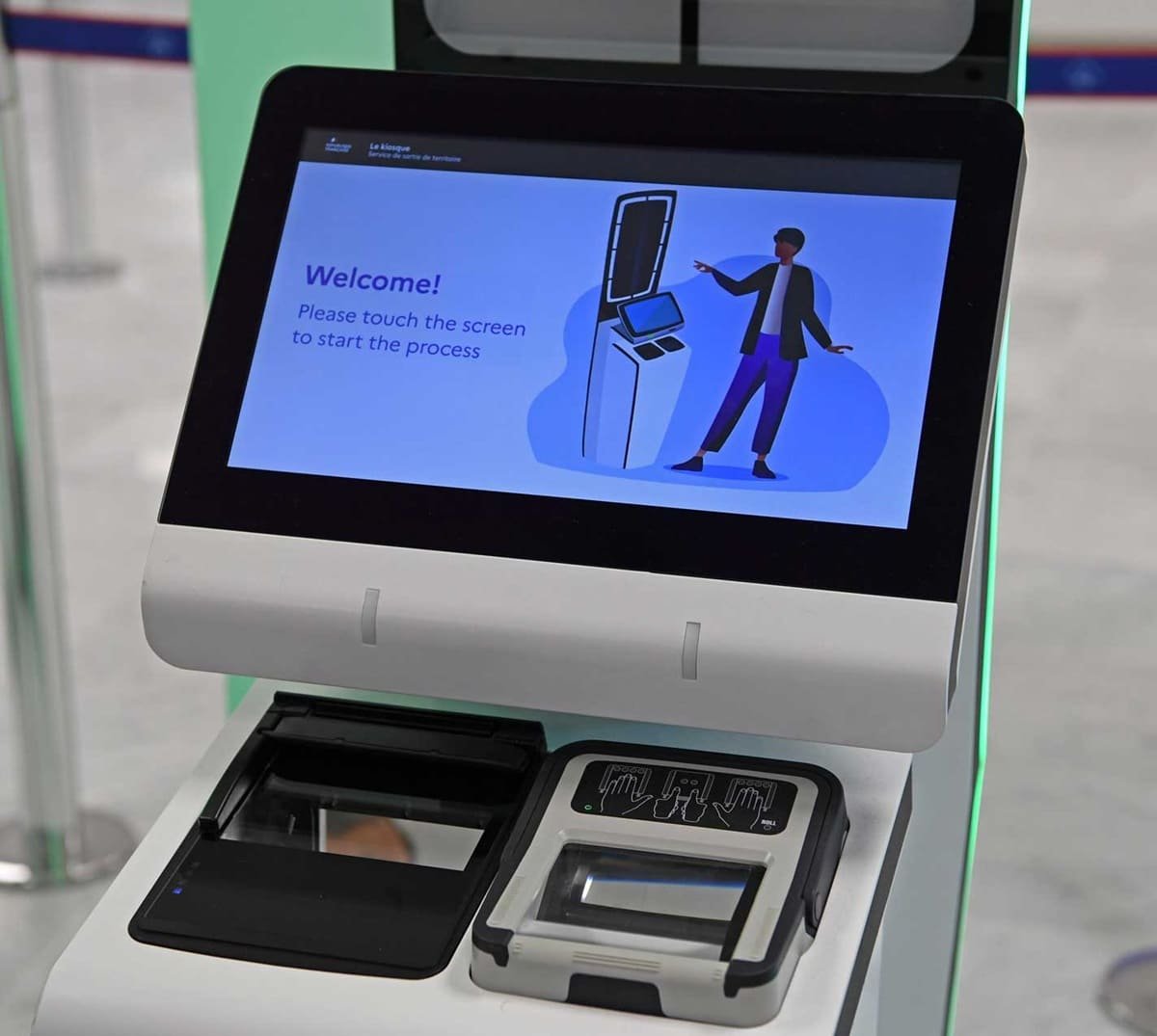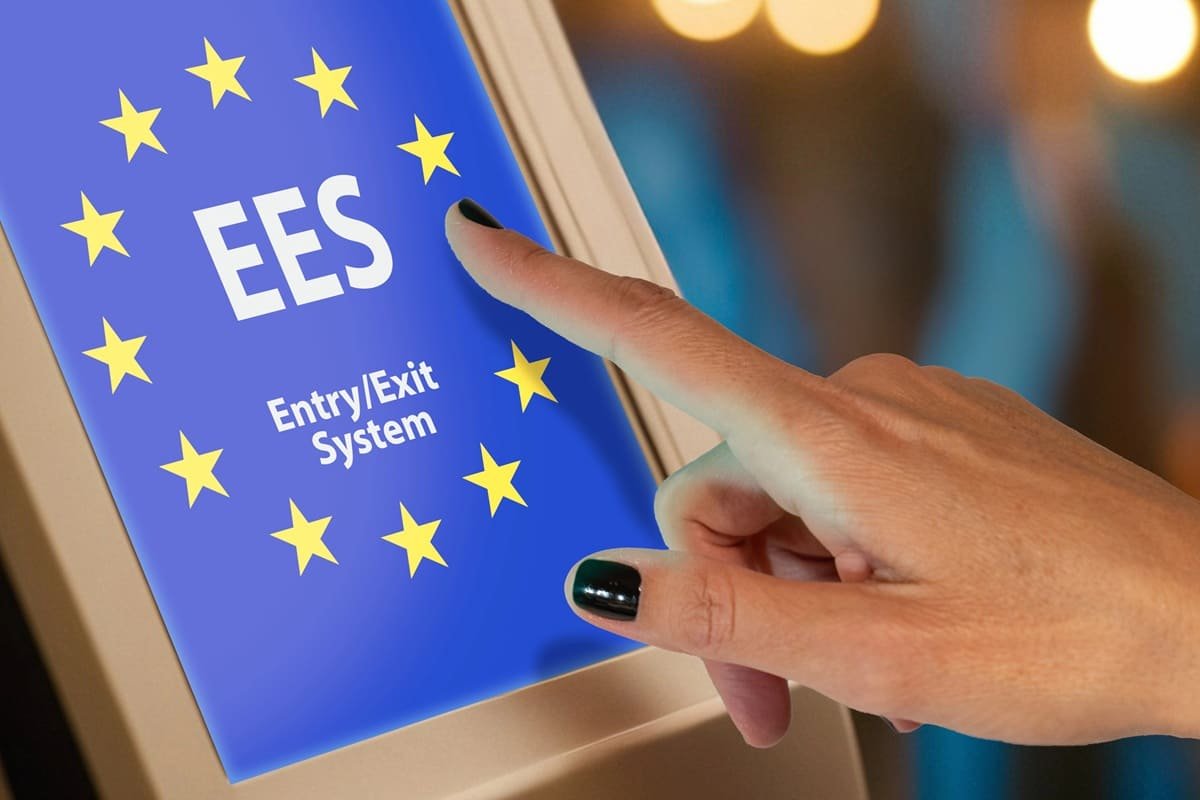Say goodbye to passport stamps. From now on, travelers from non-EU countries entering or leaving the European Union will go through a fully digital procedure.
As of October 12, 2025, the Entry/Exit System (EES) has officially taken effect across the following 29 European countries:
- Austria, Belgium, Bulgaria, Croatia, Czech Republic, Denmark, Estonia, Finland, France, Germany, Greece, Hungary, Iceland, Italy, Latvia, Liechtenstein, Lithuania, Luxembourg, Malta, the Netherlands, Norway, Poland, Portugal, Romania, Slovakia, Slovenia, Spain, Sweden, and Switzerland.
This computerized system records each non-EU traveler’s personal information, the date and place of entry or exit, and biometric data such as facial images and fingerprints.
In practice, the system applies only to short stays, up to 90 days within any 180-day period, in the Schengen Area. EU citizens and residents holding valid residence permits are not affected.
Modernizing the EU’s external borders
The EES has two main goals: to better detect overstays and to strengthen security at the EU’s external borders.
By replacing manual passport stamping with a centralized database, authorities will have accurate, real-time information on who enters, when, and how long they stay within the Schengen Area.
The use of biometric data will also help combat document fraud, while automated kiosks being installed at airports and border crossings are expected to make border checks faster and more efficient.

The EES will be rolled out gradually
Although officially launched, the EES will be rolled out gradually.
Each member state will determine its own deployment schedule across airports, seaports, and land crossings, with the goal of full implementation by April 10, 2026.
In France, preparations are already underway at Paris airports. Aéroports de Paris, in partnership with the Ministry of the Interior, plans to install nearly 320 self-service pre-registration kiosks at Charles-de-Gaulle and Orly airports.
These kiosks will allow passengers to scan their documents, provide biometric data, and speed up border processing.

Coming Next: ETIAS, another major xhange for non-EU travelers
The introduction of the EES marks the start of a broader overhaul of border control systems across the European Union.
In the same vein, the European Travel Information and Authorization System (ETIAS) is expected to launch in the last quarter of 2026.
It will apply to nationals of visa-exempt countries, including the United States, the United Kingdom, Canada, and Australia, who will soon need to obtain electronic travel authorization before departure, similar to the U.S. ESTA system.
Modeled after ESTA, ETIAS will allow EU authorities to screen travelers for security or public health risks before they arrive. The authorization will cost €20, remain valid for three years, and will be required for entry into the Schengen Area.
Complementary to the EES, ETIAS aims to enhance border security while maintaining smooth travel for legitimate visitors.






